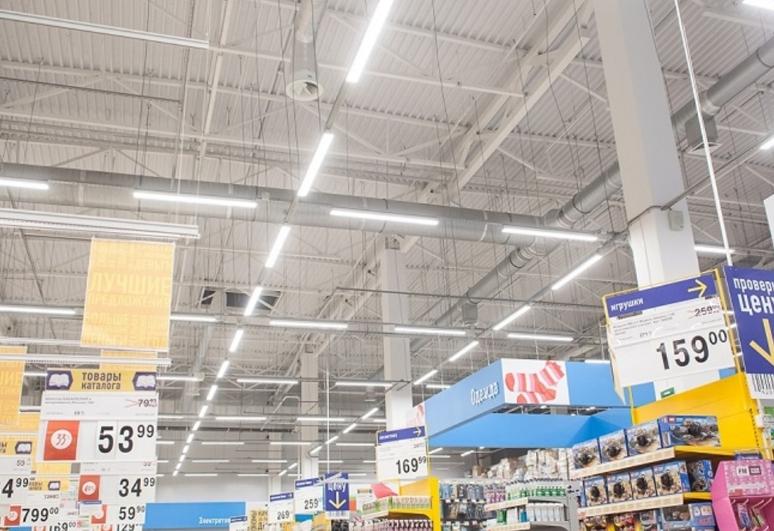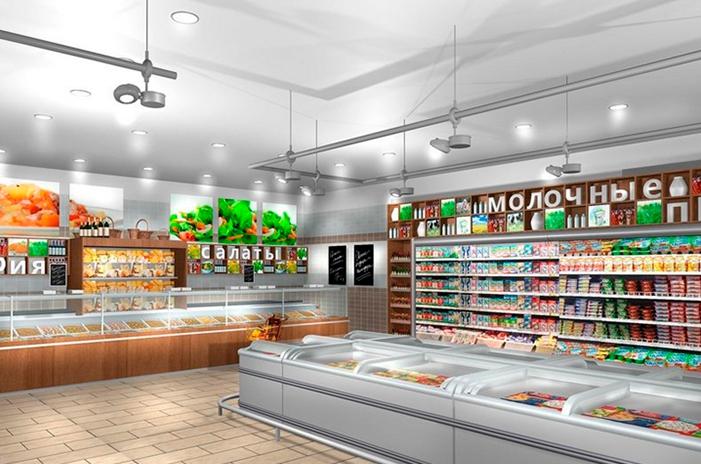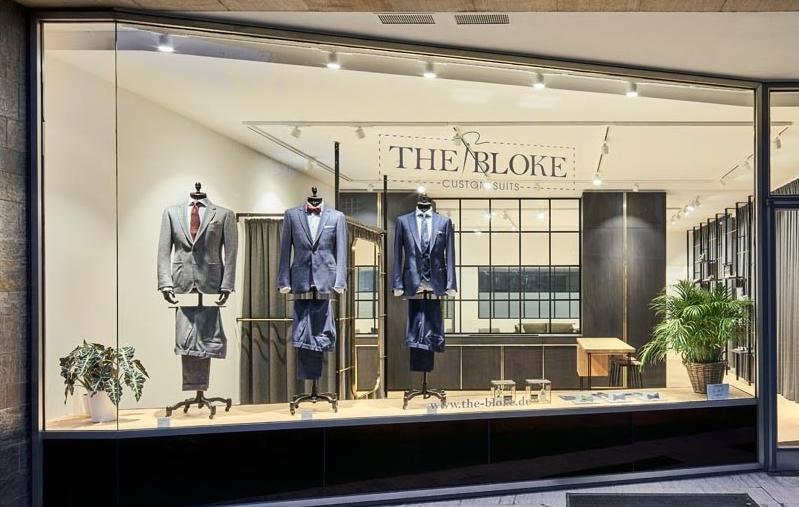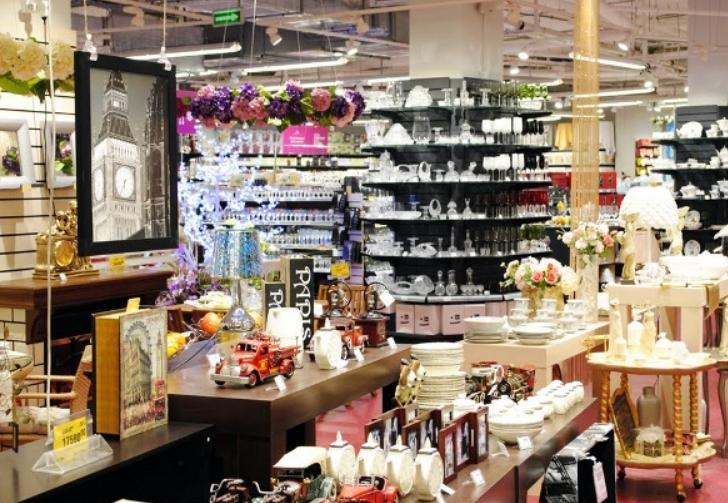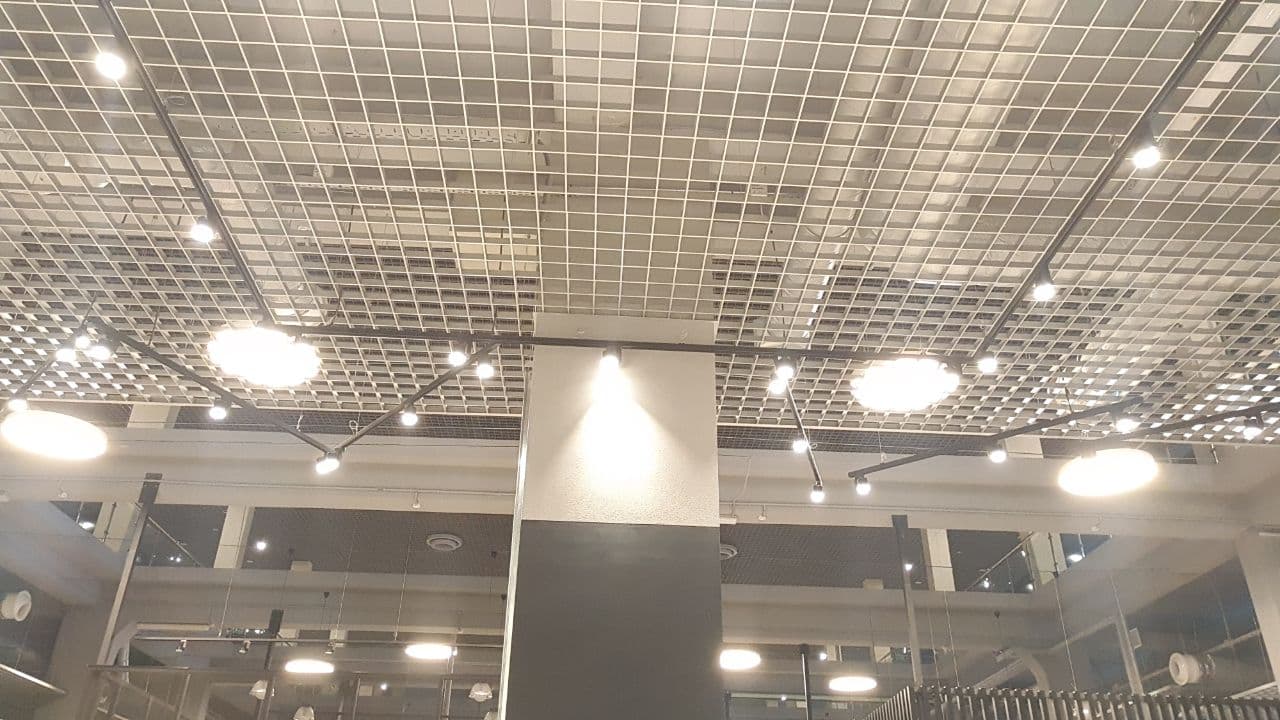Artificial lighting in the sales area
Competently chosen lighting for the sales area is able to influence customers and focus their attention on the right products and areas. In addition, it's easier to differentiate yourself from your competitors and create an atmosphere that people will love, so they'll want to come back to a particular store.
Principles of shop floor lighting
It's a lighting option that's different and requires a different approach. To begin with, you need to understand the principles that are used in planning the light:
- To ensure excellent visibility and attract attention, the lighting of the sales floor is usually done at 1000 to 1500 lux. Although in some cases it can be half as much.
- In high-end retail outlets, general lighting can be dimmed and bright light is used to accentuate individual products.
- Through the light accents can direct the buyer to the goods that are sold on special terms, or highlight new collections.
- The specifics of the products in the store must be taken into account. So, if furs are sold, the minimum level of illumination starts at 1,000 lux.This also applies to carpets and other products that strongly absorb light.
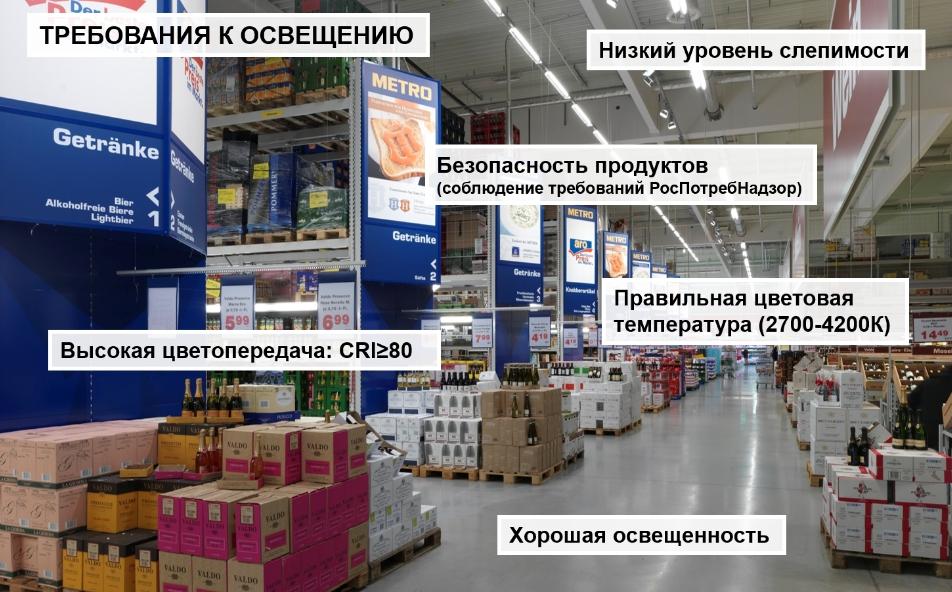
If you have a lot of goods, the lighting standards should also be increased, because the walls are closed and do not reflect light.
Types of lighting
All options used can be divided into 3 main groups depending on the characteristics of the equipment and the purpose of application:
- General Lighting sets the direction of design and provides excellent visibility throughout the sales floor. More often used diffused light from plafonds or modular fixtures, the number and location of which is determined individually.General lighting must ensure perfect visibility.
- Accent lighting light is used to highlight individual racks or products. It is used to attract the attention of customers to certain types of products or to create distinctive zones when moving around the sales area.
- Decorative lighting is necessary to highlight promotional products, decorate certain elements of the sales room. It is also important in the development of corporate identity, with its help illuminate windows and signs to attract attention.At the expense of light can make the salesroom is much more attractive.
Standards of lighting in the salesroom according to SNiP
The main norms are as follows:
- For the areas where the cash registers are located, you need 300 to 500 lux.
- Shelves, counters, and racks behind the counters in stores without self-service are illuminated with an intensity of at least 300 lux.
- All facilities in the sales areas of supermarkets and hypermarkets - from 500 lux.
- Halls in retail facilities with self-service - 400 lux and more.
- Storefronts and outdoor advertising - from 300 lux.
- The areas in which the novelties are presented are. 500 to 1,500 and more.
- The dressing rooms and the space in front of the mirrors not less than 300 lux.
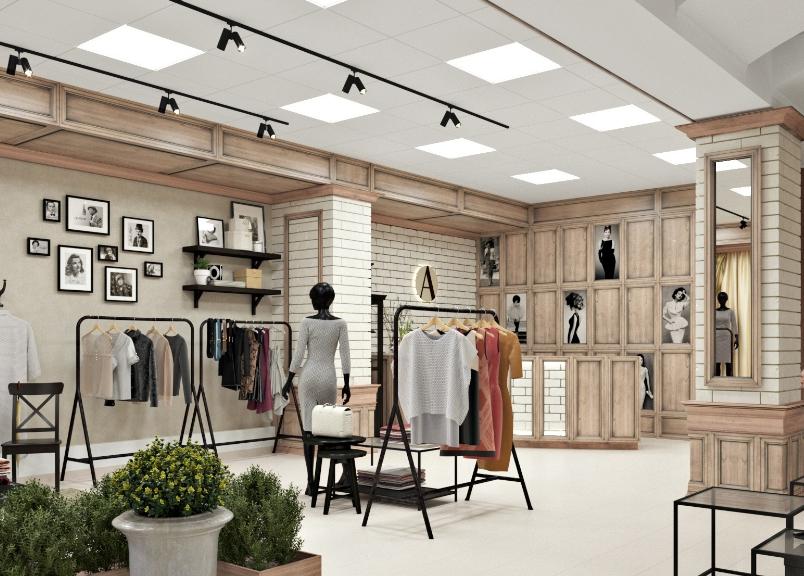
All figures presented are the minimum lighting standards established by law. The actual values are usually higher, and most often they exceed the standards by several times.
How to correctly calculate the required lighting
The first step is always to determine the luminous flux required for lighting. This is done by taking the minimum standard illuminance and the area to be illuminated. After multiplication you get the minimum allowable figure, which is often increased due to the characteristics of the room, the dark color of the walls and other factors.
Next, you must determine the type of lighting fixtures that will be used and calculate luminous fluxcoming from one element. It is easy to do, most often all the figures are on the packaging or in the accompanying documentation.
Take into account the luminance factor, which can be from 1.2 to 1.5, depending on the height of the location of the equipment and the reflection of the walls, ceiling and floor. Remember that lighting can be uneven, and the minimum allowable standards should be checked exactly in the areas with the worst light in order to achieve a good effect.
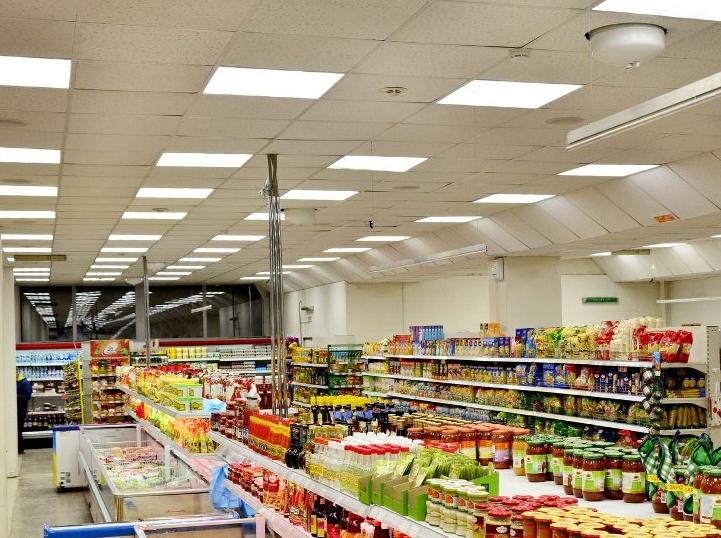
After the calculations, the number of rows of fixtures is determined, here it all depends on the width of the sales floor. It is always best plan the lighting with a reserveso that with small miscalculations, they do not affect the result. It is worthwhile to involve experts in the calculations, or just look at the peculiarities of lighting rooms of this size and shape.
By the way! It is important to determine at once and the distance between the lamps in a row, in order to accurately calculate their number. To do this, it is worth considering the total power of the lamps in each and the angle of light propagation, usually it is about 120 degrees. Light streams of neighboring elements should intersect for uniform illumination.
- If light products are exposed, the illumination can be reduced by one step. For dark products it is better to do the opposite.
- To focus attention on individual products, they can be highlighted with brighter lighting. In this case, the area of the accented areas should not be more than 20% of the total size of the showcase.
- When illuminating it should be remembered that light should not create discomfort to the eyes of pedestrians and passing drivers.
Showcase should attract attention, but not create discomfort for the eyes.Depending on the category of goods you need to choose the best color temperature for the artificial lighting of the showcase:
- For fish and fish products - from 4000 to 6500 K.
- For fruits and vegetablesFor fruits and vegetables, gastronomy, confectionery, dairy and meat products - from 2800 to 3500 K.
- For dry goods and perfumes, books, shoes, hats, fabrics, fur and toys - from 2800 to 5000 K.
- For bakery productsFor bakery products, crockery, electrical and office supplies, and groceries - 2800-3200 K.
Well-chosen lighting in the display case shows the goods in the best light.
Mistakes in organizing commercial lighting
To organize everything correctly and avoid mistakes, you must pay attention to these points:
- Use modern LED lamps, economical use of electricity. In comparison with fluorescent lights it is possible to reduce energy consumption by half.
- Consider the positioning of the general lighting so that it covers the entire sales area and ensures good visibility of all the shelves. Avoid directional light, which can blind customers.
- Choose the right color temperature for different product groups. Cool light is suitable for warm shades and vice versa, which can increase the attractiveness of displays and shelves.
- Combine general and directional light in order to highlight the areas that are most important.
The more items in the salesroom, the higher the lighting requirements.Select lighting in the salesroom should take into account a number of factors, so it is better to understand the subject in advance to organize everything correctly. It is important to comply with established standards and to think in advance about the illumination of shop windows.
In the end of the video: What should be the light for the store. How not to make major mistakes.
